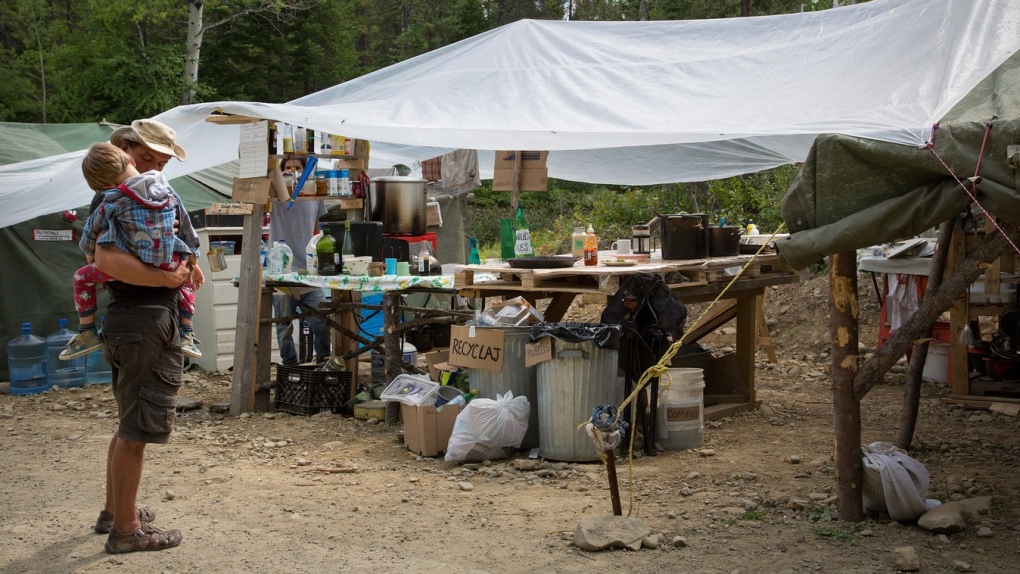Nfld. & Labrador
Ottawa, N.L. disagree on who will foot hefty Bay du Nord royalty bill
Project's location leaves Canada on the hook for
international payments
Canada could soon be the first country on Earth to pay millions of dollars in international oil royalties as a consequence of the Bay du Nord megaproject in Newfoundland and Labrador's offshore — but just how that bill gets paid remains to be seen.
Article 82 of the United Nations Convention on the Law of the Sea (UNCLOS) allows countries like Canada — known as "broad margin" states that have larger-than-normal continental shelves — to extract offshore oil beyond their 200-nautical-mile limit.
But that extraction comes with a catch: broad margin states must pay royalties on that oil, money which then gets redistributed to developing countries.
Bay du Nord, spearheaded by Norwegian oil giant Equinor, is the first project to move the province's offshore oil industry past Canada's nautical limit and into the deep waters of the Flemish Pass, which sits 270 nautical miles — about 500 kilometres — east of St. John's.
Although Bay du Nord moved closer to commissioning this month – with a green light from the federal environment minister on April 6 – Ottawa and the Newfoundland and Labrador government still haven't agreed on just how the hefty royalty bill resulting from the United Nations convention will be paid.
Hundreds of millions of dollars at stake
Michael Gardner, a Halifax-based consultant who previously studied the issue for Natural Resources Canada, said Wednesday that UNCLOS royalties from the project could reach hundreds of millions of dollars.
"It all comes back down to, what are the production levels that you reach and what's the price of oil?" Gardner said.
So, where will that money come from?
The federal government negotiated UNCLOS in the 1970s, and Parliament ratified the document in 2003. Ottawa says the provincial government should help pay the royalties, but the province, which expects to receive $3.5 billion from Bay du Nord, rejects that suggestion outright — and has for years.
"The federal government is the signatory to UNCLOS, and would be responsible for making payments under Article 82," said Andrew Parsons, Newfoundland and Labrador's energy minister, in a statement last week.
"The province does not see a role for itself in this agreement."
The Newfoundland and Labrador government receives all of its offshore revenues through a deal with Ottawa known as the Atlantic Accord.
Couldn't Equinor pay the difference?
Ottawa could impose an additional levy on Equinor to help meet its international obligations.
But that approach carries risks, warned Gardner.
"At some point, if the operator is squeezed sufficiently, it no longer is an economic proposition," he said.
"It's that old Norwegian expression, you don't want to kill the cow you're trying to milk."
In a statement, Equinor spokesperson Alex Collins said, "Decision making regarding the implementation of UNCLOS royalties rests with the Government of Canada."
Collins declined to answer further questions.
"The implementation of this mechanism in Canada, including the input from the various parties, is still under development," said Miriam Galipeau, a spokesperson for Natural Resources Canada.
N.L. position called 'almost petty'
Armand de Mestrahl, a member of the Canadian team that negotiated UNCLOS in the 1970s, said he believes a compromise between the provincial and federal government is inevitable.
"Don't forget that without that international agreement, which was painstakingly negotiated over several years by the federal government, there would be no formula. There would be no rights. We had to fight so that the international community would respect Canada's right," de Mestrahl said in an interview in French with Radio-Canada.
"People in Newfoundland… say, 'They stole our rights away.' It's easy to say that, but it's almost petty because the federal government and the Canadian delegation put in incredible effort to ensure that the continental shelf would be recognized."
He added, however, that Ottawa would be remiss to overlook the provincial government's current considerable debt load and series of structural deficits.
"It's hard to see how the government won't concede anything," de Mestrahl said.
Still time to negotiate
Ottawa and the provincial government still have years to come to an agreement.
Production at Bay du Nord isn't expected to begin until at least 2028 and under UNCLOS, no international royalties are due during the first five years of production, in a measure meant to help operators recoup upfront capital costs.
Annual royalty payments of one per cent of gross production revenues begin after the sixth year of production, and increase by one percentage point per year until the 12th year. Thereafter, royalty payments remain at seven per cent, according to the Canada Energy Regulator's website.
Bay du Nord is expected to produce at least 300 million barrels of oil over 30 years.
Risk of prolonged litigation
In a 2020 article, Dalhousie University law professor Aldo Chircop warned "there could be the realistic prospect of prolonged federal-provincial litigation" over who pays the UNCLOS royalties.
But in an interview last week, he said he believes "we live in the era of co-operative federalism. So basically what that means is that the federal and provincial governments will work together on this to find a way."
"Newfoundland would recognize that the reason why there is this offshore development out there is because of the Law of the Sea convention, which creates an obligation for them. And therefore, they would have to work with the federal government to honour this international obligation."
In an email regarding UNCLOS from October 2021 and obtained through access to information legislation, an employee at Newfoundland and Labrador's energy ministry wrote, "discussions between the federal and provincial governments, and industry are ongoing as to how to meet this obligation."


 ‘When Emmanuel Macron’s carbon tax unleashed the gilets jaunes movement, protesters were dealt with brutally.’ Demonstrators and police clash in Quimper, western France, November 2018. Photograph: Fred Tanneau/AFP/Getty Images
‘When Emmanuel Macron’s carbon tax unleashed the gilets jaunes movement, protesters were dealt with brutally.’ Demonstrators and police clash in Quimper, western France, November 2018. Photograph: Fred Tanneau/AFP/Getty Images